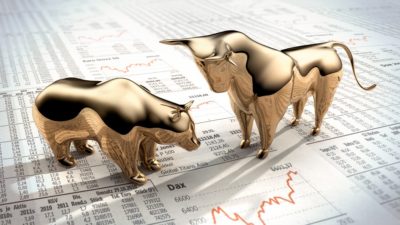If you think Shopify is the poster child of the COVID-19 pandemic, Lightspeed POS (TSX:LSPD) is the turnaround story. Lightspeed has shown a perfect V-shaped recovery in less than six months. Change is the only thing constant. The faster you adapt to the change, the better is your growth potential. In just three months, Lightspeed turned around the pandemic threat into an opportunity with an improved platform designed for the COVID-19 economy.
The COVID-19 pandemic –an opportunity in disguise
The COVID-19 pandemic led to a major market crash in March when the S&P/TSX Composite Index fell more than 30%. The last time the market crashed so severely was during the 2009 financial crisis. At that time, it took the market three years to recover completely. However, the market has significantly recovered from the pandemic in less than six months. This is because some businesses saw an opportunity in the pandemic and adjusted themselves accordingly.
Lightspeed’s business model
One such company is Lightspeed POS. It was founded in 2005 as a provider of cloud-based point-of-sale (POS) solutions for retailers. It later expanded to include restaurants and also provided omni-channel solutions. Lightspeed integrates inventory, payments, purchases, and marketing of various stores — both physical and online — on a single platform and provides data analytics for efficient working.
Lightspeed earns revenue through a subscription fee, sale of hardware POS devices, and a commission on every transaction. Its revenue growth depends on:
- Recurring revenue from existing customers
- Acquisition of new customers, preferably larger ones with many retail locations
- The number of transactions on its platform.
The company is adding more services to help retailers and restaurants expand their business. These services will also add to Lightspeed’s revenue.
How did the pandemic impact Lightspeed’s business
Lightspeed’s business model depends a lot on brick and mortar stores as it helps retailers manage multiple locations. The company had just started to pick up last year when it launched its initial public offering, Its stock doubled last year. However, the pandemic-driven lockdown temporarily closed all non-essential retail shops and restaurants for over three months (mid-March to June).
As Lightspeed has a cloud-based model, customers pay monthly and annual subscriptions. It saw a significant churn rate as many canceled their subscription. However, it saw a 400% surge in e-commerce transactions in April from February. Almost 80% of the physical store traffic moved online.
The advantage of a cloud-based platform is that you can develop new features within months. The need of the hour was to serve customers online and maintain social distancing. Hence, Lightspeed introduced curbside pick-up, contactless payments, online booking management, and order management.
A customer could check their local stores’ inventory for the product they are searching for. They could book an appointment at their local barber or schedule a pickup for their grocery.
Lightspeed is now broadening its horizon to enable retailers and restaurants to open their e-commerce stores with its platform. Retailers can choose from e-commerce themes and set up an online store. They can use Lightspeed Capital to get up to US$50,000 in funding per retail location.
They can also use Lightspeed Payments to ensure a smooth checkout. Retailers and restaurants could check both their online and offline orders on a single platform, and fulfill them using curbside delivery and appointment booking.
Lightspeed’s V-shaped recovery from $40-$12-$40
The new features increased the Lightspeed platform’s uptick in the retail sector and a recovery in the restaurant sector. In the fiscal 2021 first quarter, its e-commerce volumes doubled, gross transaction volumes surged 17%, and the number of customer locations served rose by 1,500. All this increased its revenue by 51% year-over-year.
Warren Buffett always said that a market crash is a perfect buy opportunity as you can buy good stocks for a cheap price. Lightspeed is that good stock. It fell 67% from $40 to $12 in March and surged more than 220% back to $40 in August. The reason why investors love a V-shaped recovery is that it can triple your $10,000 to over $33,300.
Lightspeed is still a growth stock with the potential to double your money in two to three years.










